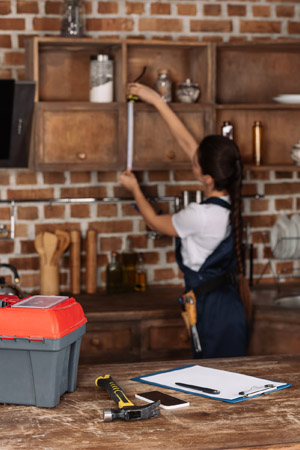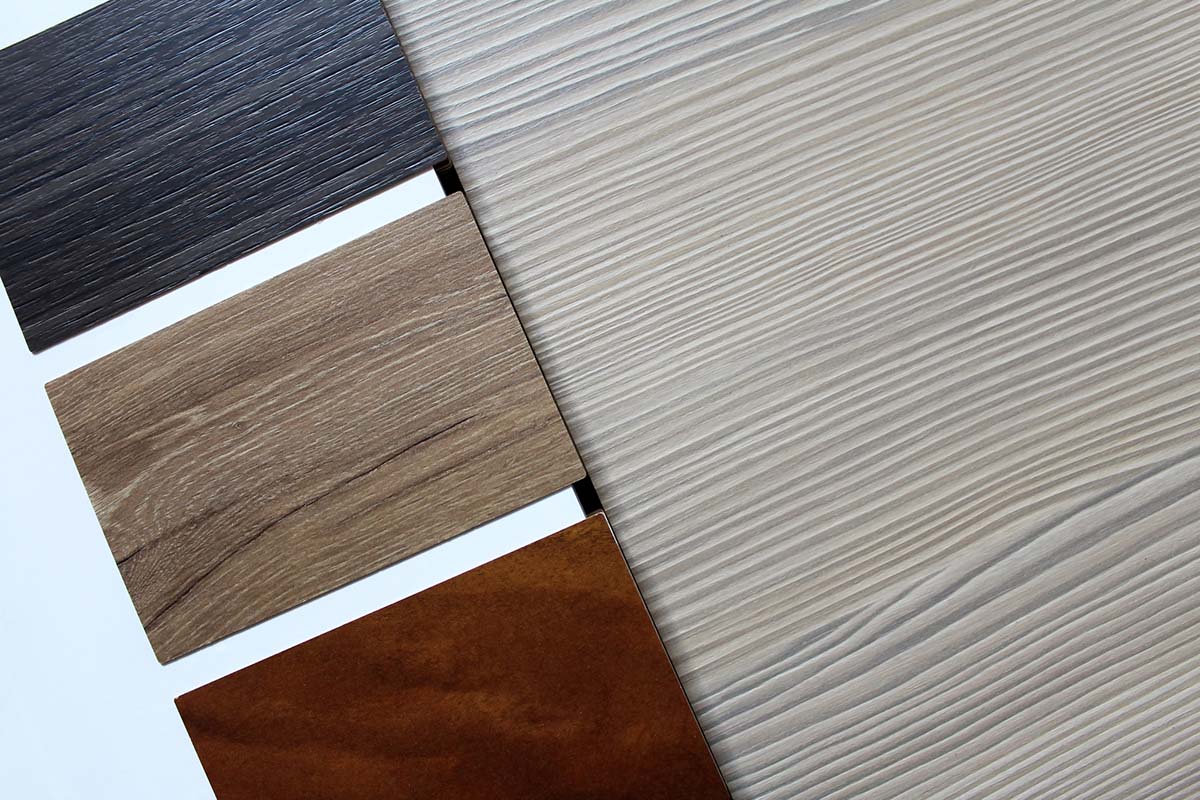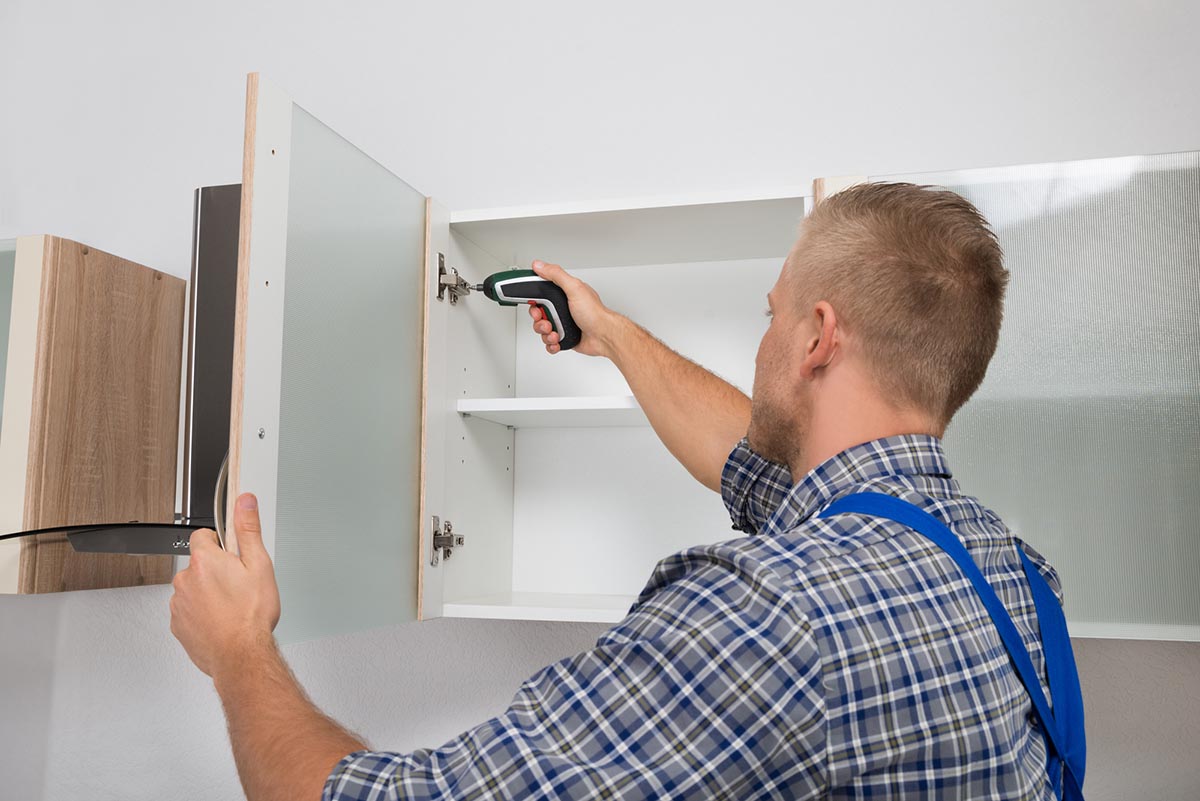We may earn revenue from the products available on this page and participate in affiliate programs. Learn More ›
If a full-on kitchen renovation isn’t in the cards right now, you can still give your cook space an impressive new look by refacing your existing cabinets. This affordable, relatively non-invasive technique involves replacing cabinet drawer and door fronts while adding a high-quality veneer (an ultra-thin sheet of real wood) over the existing boxes and face frames. Professional refacing can take your basic or old cabinets to the next level in just a few days, for less money than putting in new cabinets—and a detail-oriented homeowner can tackle the DIY cabinet refacing project to save a good deal more. Read on to learn about the materials, costs, and skills required to give your kitchen cabinets a facelift.

1. Refacing is a good option if you like your current kitchen layout.
Refacing can bring a fresh new style, color, and finish to your kitchen cabinets, but it’s best suited to folks who are happy with the existing layout of the room. It’s a poor option if you intend to change the floor plan and cabinet locations—even the best cabinets might not stand up to being moved around. That said, the existing cabinets should still be in decent shape, with perhaps only a few cosmetic dents and chips, to get good results. Cabinets with structural damage or defects will require replacement, not refacing.
2. You’ll need some refinishing chops to pull off the DIY refacing job successfully.
When done correctly, cabinet refacing is a permanent solution with a high-end look and feel, but to achieve this level of results, DIYers should have a few refinishing projects under their belt.
The veneers are intended to make the cabinet look like it’s built entirely of that wood species, so any tiny gaps or misalignments will yield a shoddy final product. Installing the new cabinet doors and drawer fronts also demands a meticulous eye to achieve an even, level, and plumb appearance.

3. You have a variety of materials to work with.
Several types of materials are used to reface cabinets. Veneers come either pre-finished or in a raw state that requires staining and finishing after installation. There are three basic options for veneers, distinguished from one another by how they are applied.
- Non-adhesive rolls that need to be installed with contact cement: This can be a little messy, but the installer gets to choose the cement. If a high-quality cement is used, the bond will last the lifetime of the cabinet.
- Peel-and-stick adhesive (PSA) rolls with adhesive already on the back of the veneer: This is a straightforward process, but the quality of the glue can be questionable.
- ⅛-inch plywood sheets that attach with wood glue and nails for the ends of cabinets: Though sturdy and durable, these sheets tend to be more expensive than a thin roll of veneer.
Utility knives and flush-trim router bits are the easiest ways to trim veneer to size, although a sharp craft knife can be just as good. Scissors can break a sheet down to the rough size while the razor or router can trim it to the perfect fit.
Drawer fronts and doors can be built with any number of different materials (most popularly oak and maple), but the species and finish must match the veneers. Hardware and hinges come in a variety of different finishes as well, including chrome, stainless steel, bronze, and brass. Choose one that accents your finished product nicely.

4. Finding the right materials will take some research.
Refacing veneers can be found at home centers, but you’ll see the broadest selection of wood species through internet searches. Most online shops that sell veneers carry hundreds of species.
There are several online shops that sell doors and drawer fronts, though most folks purchase these from a cabinetmaker (at a somewhat higher cost). Whichever route you take, try to buy both the veneer and door/drawer fronts from the same vendor, so wood grains will match up perfectly. Also be sure to take precise measurements of your existing cabinet doors and drawer fronts, ordering the replacements ahead of time to keep the project moving.
5. Refacing is far less expensive than replacement.
Refacing your cabinets can be done for less than half the cost of a total cabinet replacement. High-quality veneers are pricy, but you won’t need a lot of the material. By far, the most significant expense will be the doors and drawer fronts. Wood doors start around $30 apiece, but that number can climb significantly depending on species, style, and size.

6. The DIY cabinet refacing process requires patience and attention to detail.
The general steps for cabinet refacing are outlined below. This isn’t a project that can be thrown together or rushed through; spend enough time and energy to ensure a picture-perfect result.
- Remove the doors and drawer fronts from the cabinets, along with the hinges. Also, remove any trim work that will get in your way when installing the veneers on the cabinets.
- Assess your cabinet boxes for damage or dents. Fill any dents or gouges with wood putty.
- Lightly sand the cabinet face frames (the solid wood on the front of the cabinet) and the sides of the cabinets.
- Wipe all surfaces clean with a damp sponge and allow to dry.
- Install new end panels on the sides of the cabinets with glue and nails.
- Install the veneer on the cabinet face frames. Start with the stiles (the vertical pieces), and then move to the rails (horizontal pieces that run between the stiles). Trim the excess material with a sharp utility knife. This step may require peeling the paper off of the back of the veneer. Otherwise, it will require applying contact cement to both the back of the veneer and the surface of the cabinet.
- Install the new doors and drawer fronts in their respective places, taking care to line everything up.
- Trim the cabinets with new moldings.
- Install new hardware.


